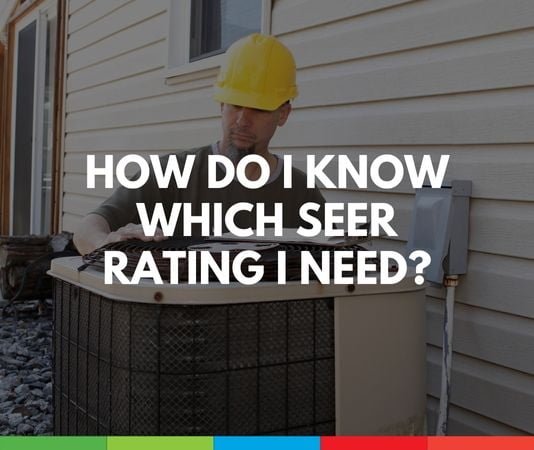How to know which SEER rating you need?
The SEER rating measures how much energy a system can pump out. It stands for “Seasonal Energy Efficiency Ratio.” The higher your SEER, the more efficient your AC is—and thus, less expensive to run. If you’re buying a new AC, you’ll want to ensure it has a minimum SEER rating of 13 (SEER 10 was common several years ago). However, if you have an older unit nearing the end of its lifespan and want to replace it with something more efficient, consider going higher than the minimum requirements—say, a SEER 17 or 18 model. You’ll save money in the long run!
What is a SEER rating?
SEER stands for “seasonal energy efficiency ratio,” measuring how well an air conditioner cools your home. In other words, if you have a 14 SEER unit in your house and the outside temperature is 100 degrees Fahrenheit, your AC will use 14 Btus (British thermal units) to cool your home down by 1 degree Fahrenheit.
SEER ratings range from 8 to more than 20, but 10 or 12 is considered average. While lower SEER models may be cheaper upfront and might last longer because they don’t have as many moving parts as higher-rated counterparts, they tend to be less efficient at cooling down a house–so over time, they’re less cost-effective!
If you buy an air conditioner, the Environmental Protection Agency (EPA) and many state governments require that you purchase one with a SEER rating of at least 13. This is the minimum rating required by these agencies. However, if you want to save as much money as possible on your energy bills and get more out of your home comfort system, consider purchasing an AC unit with a higher SEER rating.
One way to compare different models is by looking at their efficiency levels: The higher the number, the more efficient it is. For instance, there are two types of air conditioners: single-phase motors (1-phase) and three-phase motors (3-phase). Single-phase motors have a high starting resistance but a lower running resistance than 3-phases; therefore, single-phase units tend to be less efficient than 3 phases because they use more electricity when they start up than during normal operation.
Why are SEER ratings changing?
The U.S. Department of Energy is updating energy standards to reflect current technology, and these new standards are expected to save more energy than previous SEER ratings did. In addition, they will also help you save money by reducing your utility bills, and they’ll have an even greater impact on the environment by reducing greenhouse gas emissions from power plants across the country.
How can I replace my HVAC system to get a SEER of 20 or greater?
The most important thing you can do is replace your HVAC system. You can also get a new SEER-rated system that is Energy Star-rated and has a variable speed blower.
You can also change out the blower motor on your existing system, though this only slightly improves energy efficiency and may not be worth the cost for some people.
All central air conditioning systems installed after Jan. 1, 2015, must meet energy standards of at least 14 SEER (Seasonal Energy Efficiency Ratio).
If you’re shopping for a central air conditioner to replace an existing system or just considering installing one for the first time, there are some important things to keep in mind. The first thing is that you need to consider the SEER rating of the unit.
Start by asking yourself these questions:
- What size AC do I need?
- Is it going to be installed inside or outside?
- Will it be condensing or non-condensing (like window units)?
- How much does it cost per month to operate?
- Finally, you need a SEER 2 system.
The last change: SEER 2.
New to the SEER standard is SEER 2, which is expected to be introduced in 2023 and replace SEER 13. SEER 2 will be the new DOE energy standard for residential heating and cooling equipment.
By January 2023, the Department of Energy will implement the new SEER 2, which will be more efficient; therefore, it will benefit those who use it because the consumption bill will be reduced. We will be talking about this new standard in a different blog article.
Conclusion
We hope this article has helped you understand what a SEER rating is and why it’s important. Remember that a higher SEER rating is always better for improving efficiency and reducing energy bills. However, if the cost of a high SEER system is too much for your budget, there are other options to consider, such as HVAC maintenance plans or financing programs.
If you’re interested in learning more about how an HVAC system can benefit your home or business, or if you want to know what the new SEER 2 standard means, please don’t hesitate to contact us. And if you’re in need of air conditioning service in Tampa, we’re here to help!









